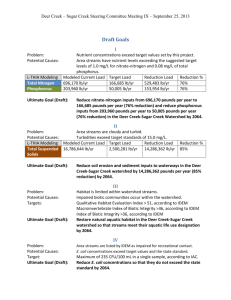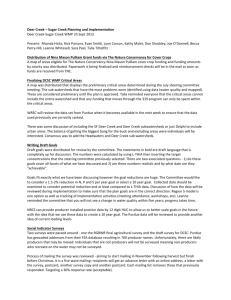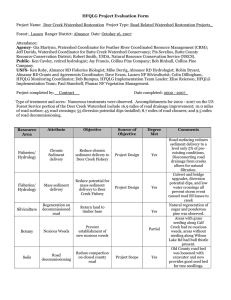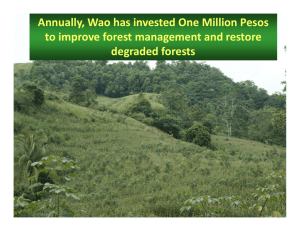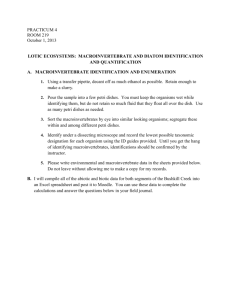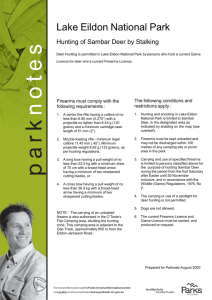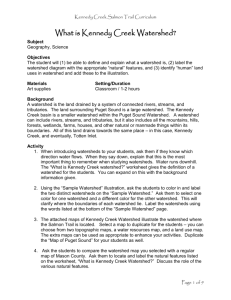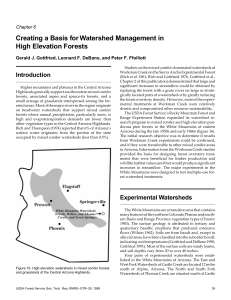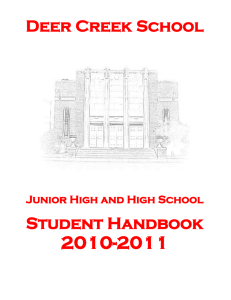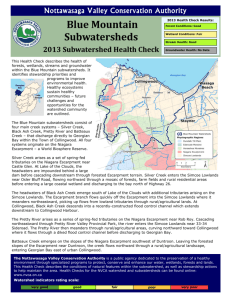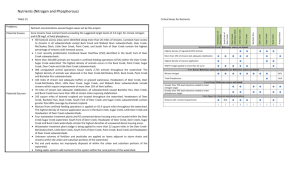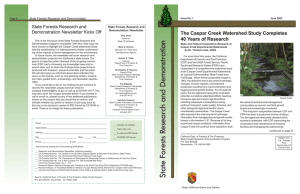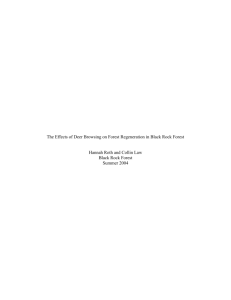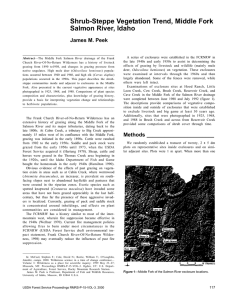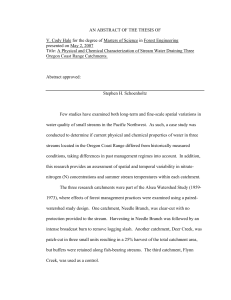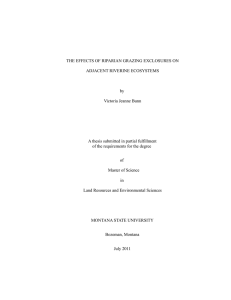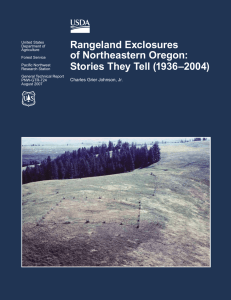9-12 Pre-trip Diagnostic
advertisement
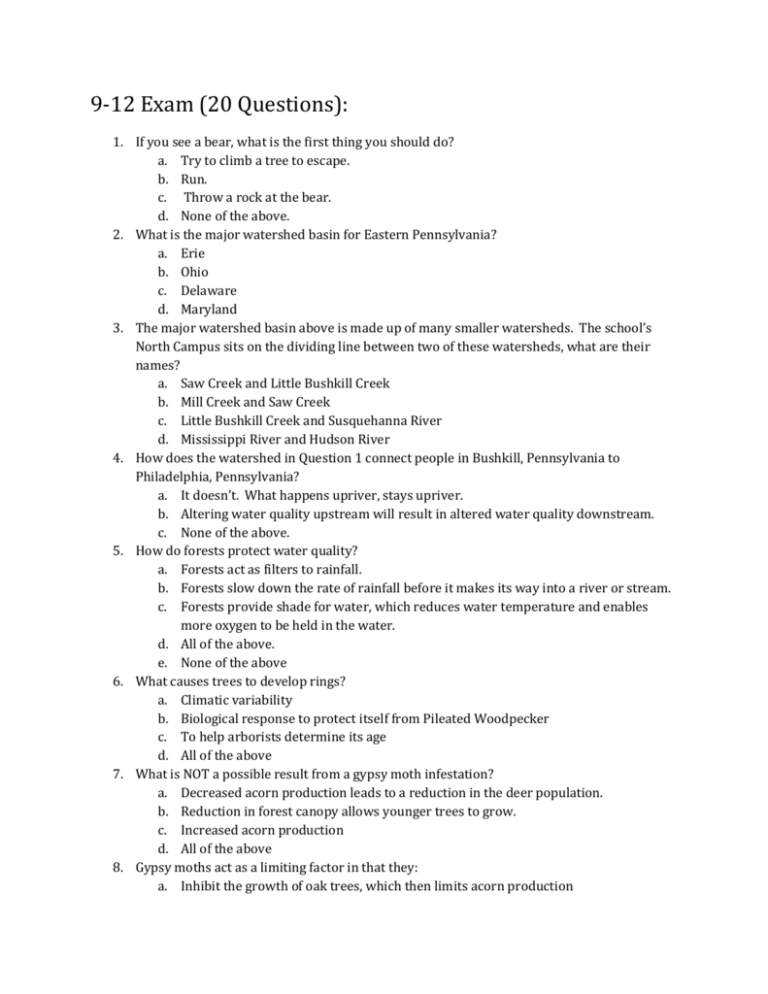
9-12 Exam (20 Questions): 1. If you see a bear, what is the first thing you should do? a. Try to climb a tree to escape. b. Run. c. Throw a rock at the bear. d. None of the above. 2. What is the major watershed basin for Eastern Pennsylvania? a. Erie b. Ohio c. Delaware d. Maryland 3. The major watershed basin above is made up of many smaller watersheds. The school’s North Campus sits on the dividing line between two of these watersheds, what are their names? a. Saw Creek and Little Bushkill Creek b. Mill Creek and Saw Creek c. Little Bushkill Creek and Susquehanna River d. Mississippi River and Hudson River 4. How does the watershed in Question 1 connect people in Bushkill, Pennsylvania to Philadelphia, Pennsylvania? a. It doesn’t. What happens upriver, stays upriver. b. Altering water quality upstream will result in altered water quality downstream. c. None of the above. 5. How do forests protect water quality? a. Forests act as filters to rainfall. b. Forests slow down the rate of rainfall before it makes its way into a river or stream. c. Forests provide shade for water, which reduces water temperature and enables more oxygen to be held in the water. d. All of the above. e. None of the above 6. What causes trees to develop rings? a. Climatic variability b. Biological response to protect itself from Pileated Woodpecker c. To help arborists determine its age d. All of the above 7. What is NOT a possible result from a gypsy moth infestation? a. Decreased acorn production leads to a reduction in the deer population. b. Reduction in forest canopy allows younger trees to grow. c. Increased acorn production d. All of the above 8. Gypsy moths act as a limiting factor in that they: a. Inhibit the growth of oak trees, which then limits acorn production 9. 10. 11. 12. 13. 14. 15. 16. 17. b. Quickly reproduce, and spread to more oak trees c. Limit the amount of sunlight to reach the floor d. All of the above Which of these is NOT an adaptation? a. Non-poisonous mushrooms that share the same colors and markings as poisonous mushrooms. b. Pitch pine cones that open to seed after a forest fire c. Increased sunlight to a lake that results in decreased dissolved oxygen content What is the carbon cycle? a. The process for manufacturing pencils. b. The movement of carbon dioxide in the atmosphere. c. Movement of carbon between forests, oceans, soils, human activity, and the atmosphere. d. The geochemical equation for combusting fossil fuels. Which of the following items would be considered a carbon sink? a. Mushroom b. Tree c. White-tailed Deer d. All of the above What is NOT a practical use for a topographic map? a. Helping to decide where to build a house. b. Finding areas that may be prone to flooding. c. The quickest driving directions from Hawley to Marshalls Creek Topographic maps can help you determine the boundaries of a watershed. a. True b. False What is an example of a limiting factor? a. Amount of acorns produced by oak trees in a year. b. Forest habitat is cleared to construct a new mall. c. Drought conditions result in streams drying up d. All of the above Which of the following is considered both a carbon source and sink? a. Tree b. Cool-weather grasses c. Hay-scented fern d. All of the above A deer exclosure area is set up by the Forest Service to prevent deer from entering a certain area of a forest. What will likely not result from this action? a. Increased deer browse (feeding) in areas outside the exclosure b. Increased vegetation diversity inside the exclosure c. Cannibalization of deer population d. Decreased vegetation outside the exclosure What is NOT a way to prevent the spread of invasive insects? a. Always carry a can of bug spray wherever you go b. Use local wood when building a campfire c. Avoid transporting plants, fruit or vegetables over long distances d. All of the above 18. The ability for animals to produce light inside their bodies is called what? a. Photoluminescence b. Bioluminescence c. Radiance d. None of the above 19. What waters are part of a watershed? a. Streams b. Wetlands c. Groundwater d. All of the above 20. As of 2012, the invasive Asian longhorn beetle has inflicted severe damage to many of Pennsylvania’s maple and poplar populations. a. True b. False Survey Questions (only after they return from the trail). 1. 2. 3. 4. 5. I have learned a great deal about the natural features in my area after using this trail. a. Strongly Agree b. Agree c. Disagree d. Strongly Disagree What aspect from the trail guide interested you? Why? If you could add another station to the North Campus trail, what would it be? When you are not in school, how often do you spend time outdoors for fun? a. At least once a day. b. At least once a week. c. Less than once a week. d. Rarely, if at all. e. Never. Have you ever been on another interpretive trail? a. Yes. b. No.
